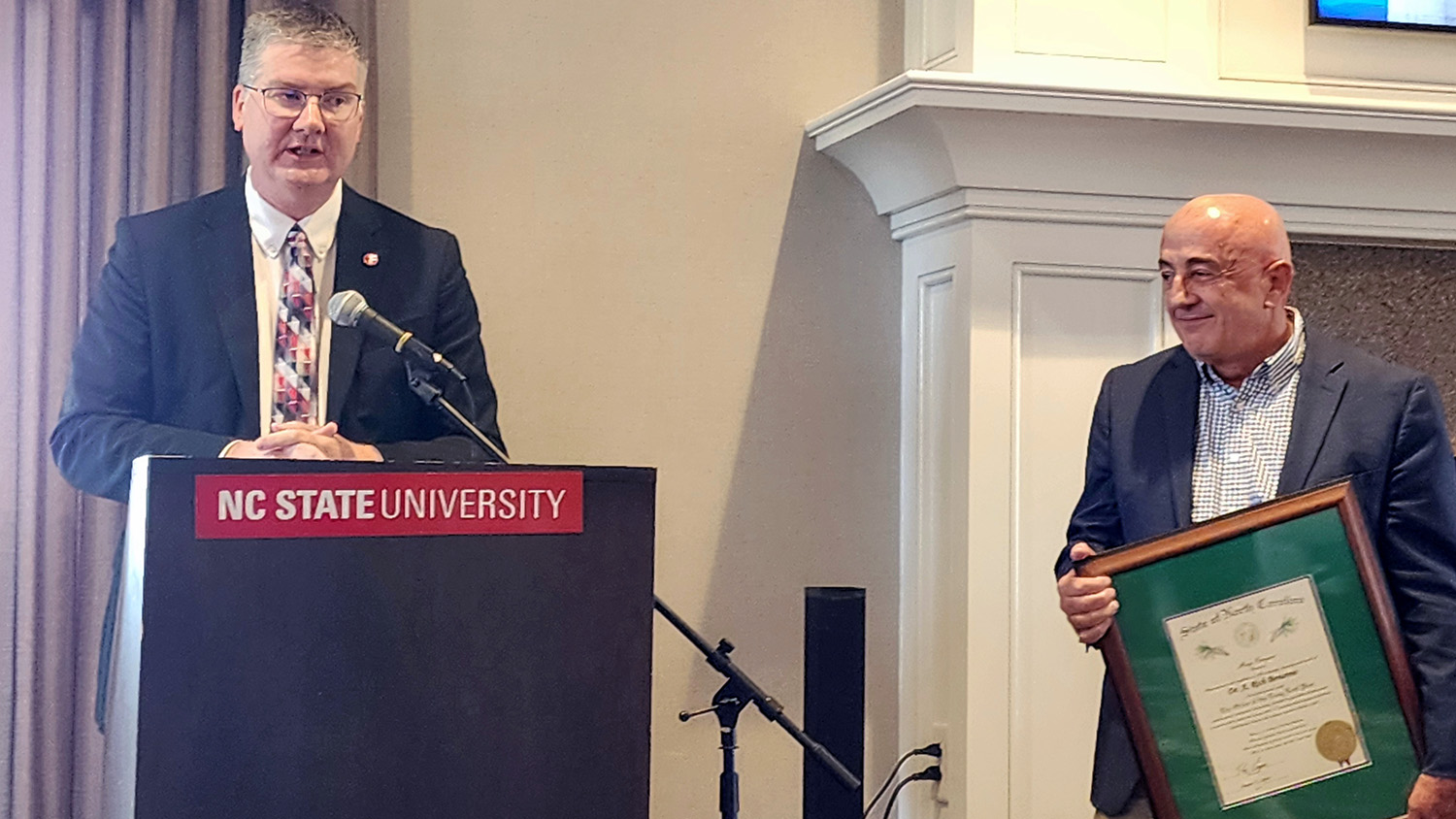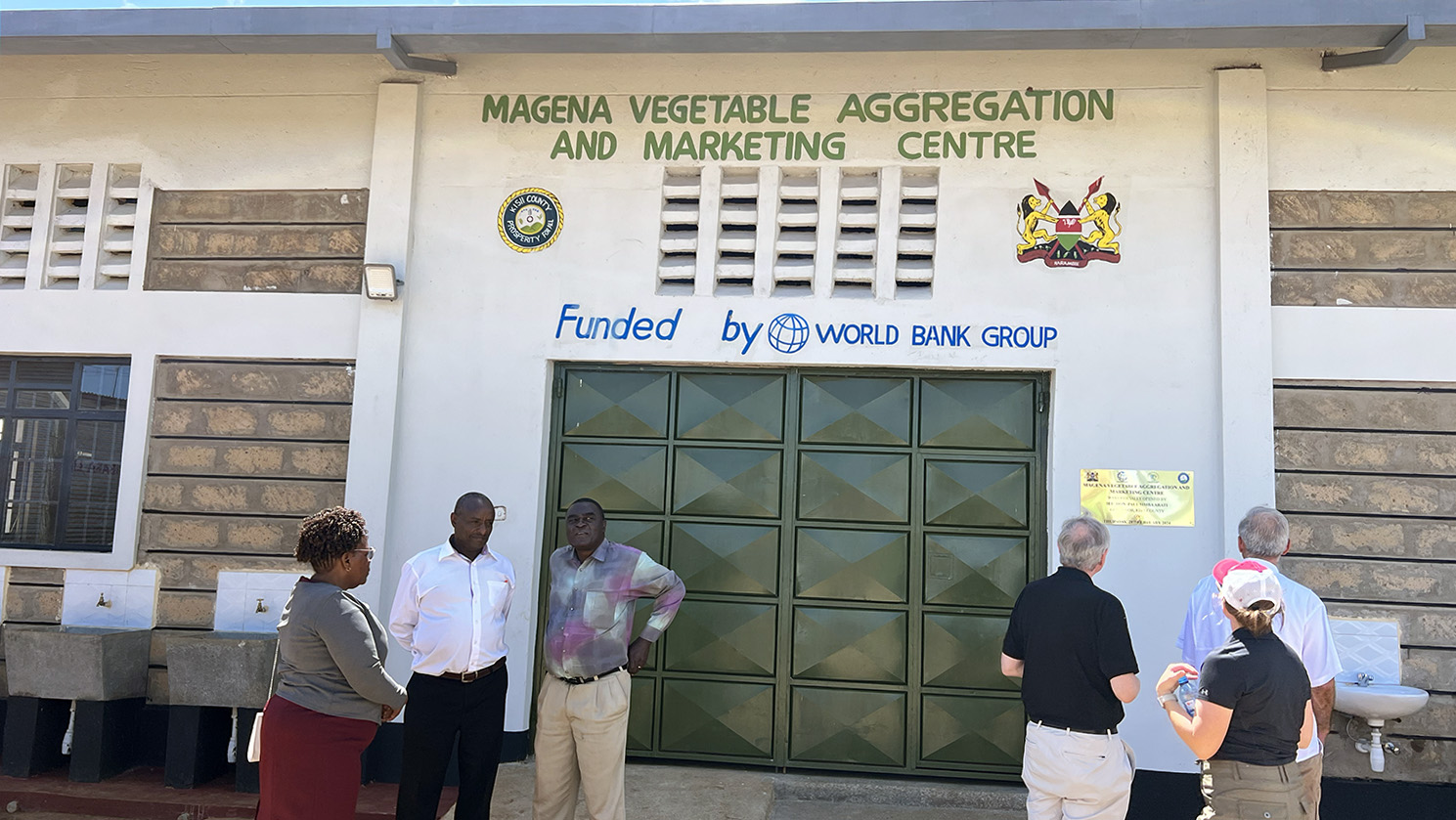Lentil Underground author gives CEFS lecture
Liz Carlisle’s book, Lentil Underground, is the tale of two undergrounds – the miracle of nitrogen fixation that takes place in the soil beneath the lentil crop and the radical action by a group of Montana farmers who rejected the notion of “bigger is better” agriculture.
Carlisle, author and fellow at the University of California Berkeley’s Center for Diversified Farming, was the speaker at a recent Center for Environmental Farming Systems lecture at NC State’s Hunt Library. She was joined by David Oine, one of the original farmers who started growing organic lentils in Montana’s Golden Triangle, the heart of ag production there.
Carlisle said she has spent much time talking with farmers through her various careers.
“Farmers are interested in a better food system. What I’ve heard from farmers, including my grandmother who was a farmer, is that the reason they do it is that they want to steward the land, they want to nourish their communities, they want to feed good food to people and take care of the planet,” she said.
Structural policies around agriculture have encouraged farmers to, “get big or get out,” in the words of the late Earl Butz, U.S. secretary of agriculture in the 1970s, she said. She became intrigued with this small group of Montana farmers who developed a successful business growing organic lentils.
Carlisle’s grandmother lost her family’s Nebraska farm in the Dust Bowl. “She also saw what fell apart when the land was over-farmed and when there was sort of this imperative to produce as much as possible. She saw this happen again and again. She saw her neighbors getting out, not by choice,” Carlisle said.
“When she talked to me about agriculture she told me, ‘You’ve got to find another way to do this – how can we do this in a more regenerative way?’” Carlisle said. “The answer I found was organic lentils.”
Oine is a third-generation farmer who returned to his family’s Montana farm in the 1970s in the midst of the oil crisis, low commodity prices and high interest rates. He saw lots of farmers “out of money and out of hope,” Oine said.
At the time, the Butz farm policy encouraged farmers to increase production, and the commodity crop for Montana at the time was wheat. Oine and a small group of friends wanted to try something different – raising organic lentils as seed for cover crops. The local banker had two questions for the entrepreneurs, “What’s a lentil and what is organic?” Oine said.
Grocery retailer Trader Joe’s approached Oine’s business, Timeless Seeds, about producing small packages of lentils for the consumer market instead, so Oine and his partners turned to their friends to “crowd source” funds to purchase a grain elevator for the project. Unfortunately, the Trader Joe’s deal dried up quickly, leaving Oine and Timeless Seeds without a buyer.
But the experience taught them now to sell a retail product, so Timeless Seeds developed its own brand and label. So they were prepared when Whole Foods approached them about marketing their lentils through the sustainable grocery chain. Today, Timeless Seeds is a multi-million dollar business that sells a variety of organic lentils and specialty grains, supporting organic family farmers throughout Montana and the surrounding region. Learn more about the company at https://www.timelessfood.com/
After the lecture at Hunt Library, participants were invited to dinner at Irregardless Café, featuring grains and lentils produced by Timeless Seeds.
In addition to CEFS, other sponsors of the Lentil Underground lecture were: The Irregardless Café, NCSU Libraries, Quail Ridge Books, NC Organic Grain Program and the Sustainable Agriculture Graduate Student Association.
-N. Hampton


